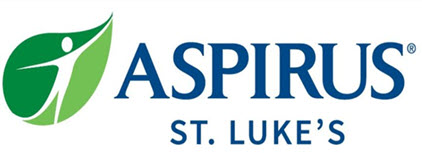Pyloroplasty
Peptic ulcer - pyloroplasty; PUD - pyloroplasty; Pyloric obstruction - pyloroplastyPyloroplasty is surgery to widen the opening in the lower part of the stomach (pylorus) so that stomach contents can empty into the small intestine (duodenum) more easily.
Duodenum
The duodenum is the first part of the small intestine. It is located between the stomach and the middle part of the small intestine, or jejunum. Aft...
Read Article Now Book Mark ArticleThe pylorus is a thick, muscular area. When it thickens or its opening narrows, food cannot pass through normally.
Description
The surgery is done while you are under general anesthesia (asleep and pain free).
General anesthesia
General anesthesia is treatment with certain medicines that puts you into a deep sleep-like state so you do not feel pain during surgery. After you ...
Read Article Now Book Mark ArticleIf you have open surgery, the surgeon:
- Makes a large surgical cut in your belly to open the area.
- Cuts through some of the thickened muscle where your stomach empties so it becomes wider.
- Closes the cut in a way that keeps the pylorus open. This allows the stomach to empty more easily.
Surgeons can also do this surgery using a laparoscope. A laparoscope has a tiny camera that is inserted into your belly through a small cut. Video from the camera will appear on a monitor in the operating room. The surgeon views the monitor to do the surgery. During the surgery:
- Three to five small cuts are made in your belly. The camera and other small tools will be inserted through these cuts.
- Your belly will be filled with gas to allow the surgeon to see the area and perform the surgery with more room to work.
- The pylorus is operated on as described above.
Why the Procedure Is Performed
Pyloroplasty is used to treat complications in people with peptic ulcers or other stomach problems that cause a blockage of the stomach outlet opening.
Peptic ulcers
A peptic ulcer is an open sore or raw area in the lining of the stomach or intestine. There are two types of peptic ulcers:Gastric ulcer -- occurs in...
Read Article Now Book Mark ArticleRisks
Risks for anesthesia and surgery in general are:
- Reactions to medicines or breathing problems
Breathing problems
Breathing difficulty may involve:Difficult breathing Uncomfortable breathingFeeling like you are not getting enough air
Read Article Now Book Mark Article -
Bleeding, blood clots, or infection
Bleeding
Bleeding is the loss of blood. Bleeding may be:Inside the body (internal)Outside the body (external)Bleeding may occur:Inside the body when blood le...
Read Article Now Book Mark ArticleBlood clots
Blood clots are clumps that occur when blood hardens from a liquid to a solid. A blood clot that forms inside one of your veins or arteries is calle...
Read Article Now Book Mark Article
Risks of this surgery include:
- Damage to the intestine or nearby organs
-
Hernia
Hernia
A hernia is a sac formed by the lining of the abdominal cavity (peritoneum). The sac comes through a hole or weak area in the strong layer of the be...
Read Article Now Book Mark Article - Leakage of stomach contents
- Long-term diarrhea
-
Malnutrition
Malnutrition
Malnutrition is the condition that occurs when your body does not get enough nutrients.
Read Article Now Book Mark Article - Vomiting
- Dumping syndrome (when food moves too rapidly from the stomach to the duodenum)
Before the Procedure
If you are a smoker, you should stop smoking several weeks before surgery and not start smoking again after surgery. Smoking slows recovery and increases the risk of problems. Tell your surgeon or health care provider if you need help quitting.
Need help quitting
There are many ways to quit smoking. There are also resources to help you. Family members, friends, and co-workers may be supportive. But to be su...
Read Article Now Book Mark ArticleTell your surgeon or nurse if:
- You are or could be pregnant
- You are taking any medicines, including medicines, supplements, or herbs you bought without a prescription
During the week before your surgery:
- You may be asked to temporarily stop taking medicines that keep your blood from clotting. These medicines are called blood thinners. This includes over-the-counter medicines and supplements such as aspirin, ibuprofen (Advil, Motrin), naproxen (Aleve, Naprosyn), and vitamin E. Many prescription medicines are also blood thinners.
- Ask your surgeon which medicines you should still take on the day of surgery.
On the day of surgery:
- Follow instructions about when to stop eating and drinking.
- Take the medicines your surgeon told you to take with a small sip of water.
After the Procedure
After surgery, your health care team will monitor your breathing, blood pressure, temperature, and heart rate. Many people can go home within 24 hours.
Outlook (Prognosis)
Most people recover quickly and completely. The average hospital stay is 2 to 3 days. It's likely you can slowly begin a regular diet in a few weeks.
References
Chan FKL, Lau JYW. Peptic ulcer disease. In: Feldman M, Friedman LS, Brandt LJ, eds. Sleisenger and Fordtran's Gastrointestinal and Liver Disease. 11th ed. Philadelphia, PA: Elsevier; 2021:chap 53.
Mahvi DA, Mahvi DM. Stomach. In: Townsend CM Jr, Beauchamp RD, Evers BM, Mattox KL, eds. Sabiston Textbook of Surgery. 21st ed. St Louis, MO: Elsevier; 2022:chap 49.
Review Date: 9/30/2024
Reviewed By: Jonas DeMuro, MD, Diplomate of the American Board of Surgery with added Qualifications in Surgical Critical Care, Assistant Professor of Surgery, Renaissance School of Medicine, Stony Brook, NY. Review provided by VeriMed Healthcare Network. Also reviewed by David C. Dugdale, MD, Medical Director, Brenda Conaway, Editorial Director, and the A.D.A.M. Editorial team.


